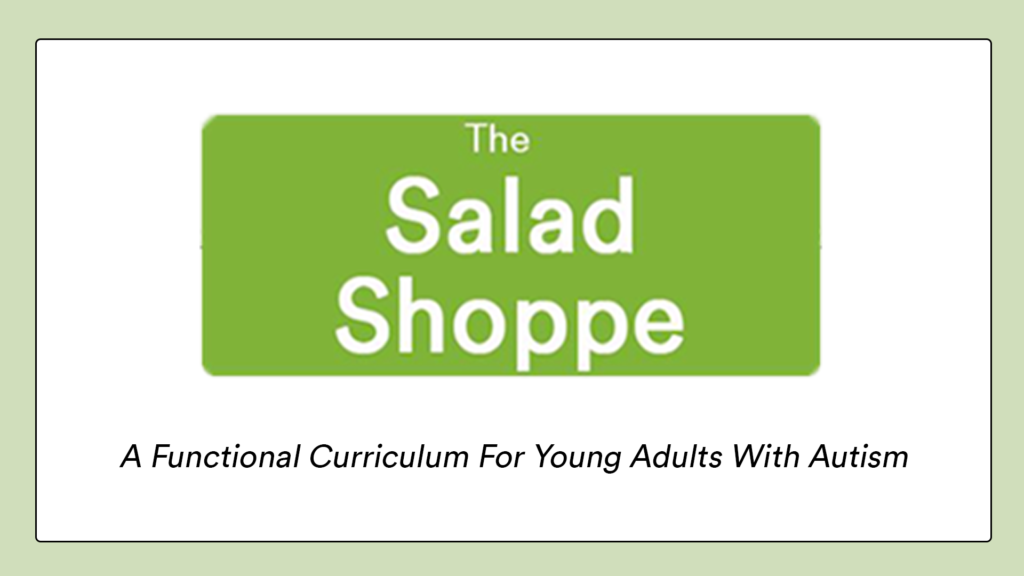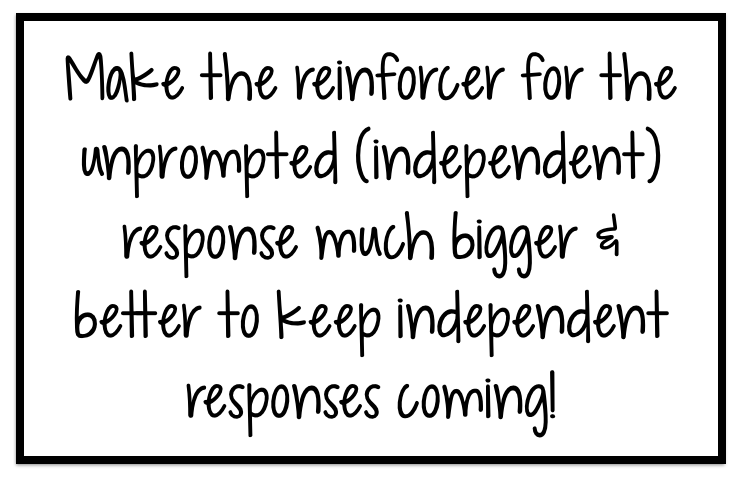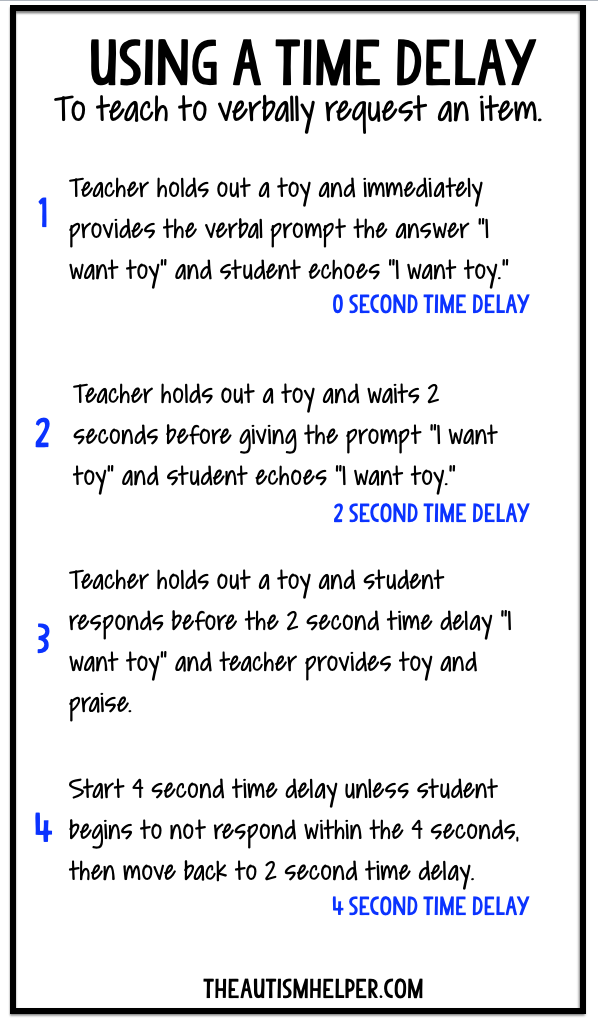This month’s ASAT feature comes to us from David Celiberti, PhD, BCBA-D. To learn more about ASAT, please visit their website at www.asatonline.org. You can also sign up for ASAT’s free newsletter, Science in Autism Treatment, and like them on Facebook!
April is Autism Awareness Month. Blue puzzle pieces will appear on thousands of Facebook pages and billboards, and the media will give greater attention to autism. Further awareness is wonderful, as detection and diagnosis are necessary first steps to accessing help in the forms of treatment, information, and support. With well over 500 treatments from which to choose, parents of children with autism need guidance, tools, and accurate information to empower them to make the best possible choices for their children: these choices will undoubtedly have a profound impact on both their current quality of life and their children’s future and potential.
When I first entered the field over 30 years ago, autism was considered a rare condition. When people asked what I did for a living, they often misheard me and thought I worked with “artistic” children. I got that a lot. With the incidence of one in 59 children today, our own families, neighbors, and co-workers are all touched by autism. In fact, the sheer numbers have heightened awareness of autism in and of themselves. This awareness is essential: it promotes early detection, and with early detection, we hope for a relatively clearer course toward effective treatment and better outcomes.
Sadly, however, the early detection of autism alone does not provide a seamless path to intervention. Furthermore, families whose children are diagnosed with autism are still not able to access the most effective science-based treatments available expeditiously. Instead, families often have to sort through hundreds of pseudoscientific treatments until they arrive at the most effective interventions supported by peer-reviewed research to address the complexities of autism.
“Autism Awareness” should be about more than just detection and diagnosis. At the Association for Science in Autism Treatment (ASAT), it has always been our hope that the conversation around autism awareness would be broadened to focus upon addressing the obstacles that separate individuals with autism from receiving effective, science-based intervention and combatting the misinformation that distracts families, caregivers, and teachers from accessing accurate information. I offer 11 perspectives about what “Autism Awareness” should be about, along with several ways that ASAT can assist families and providers alike in navigating the complex maze of autism treatment options.
#1 “Autism Awareness” must differentiate effective treatments that are scientifically validated from the plethora of “therapies” and “cures” lacking scientific support. Such a distinction is critical.
Autism treatment is a billion-dollar industry. For the majority of the 500+ available interventions, science is overlooked in favor of pseudoscience, and they are marketed using heart-wrenching testimonials, anecdotes and video montages, and often bolstered with poorly crafted and misleading surveys. Many interventions boast inaccurate and even outrageous claims that are touted as evidence of effectiveness. Marketing of these so-called “therapies” and “cures” is unambiguously aggressive in nature, and so overwhelming that it can drown out accurate information for those parents desperate to help their children access the very best treatment. We are in a time when anything can be placed before the word therapy and pushed forth as a “bonafide treatment” (Legos, llamas, bleach, sand, magnets and even Shakespeare to name but a few examples).
We do no favors for children with autism, their families, and those responsible for providing needed services when we not only ignore junk science, but allow it to proliferate by failing to counter baseless claims. Visit our website to learn more about the scientific support behind various autism treatments, the relevance of peer-reviewed research, the pitfalls of testimonials, as well as many other articles related to becoming a savvy consumer. Please also see our review of the second edition of Dr. Sabrina Freeman’s book, The Complete Guide to Autism Treatment.
#2 “Autism Awareness” must recognize our collective responsibility to make sound choices.
As adults, voters, consumers, providers, and parents, choice underlies all of our decisions. We have a right to make these decisions, even poorly; however, when we hold the futures of individuals with autism in our hand, decision-making power comes with tremendous responsibility. Responsibility that should never be abdicated. There is a myriad of “decision-makers” whose choices have profound implications for children and adults with autism – not just parents, but siblings, teachers, treatment providers, administrators, program coordinators, and taxpayers.
Please see our webpage for parents. There you will find an article on questions to ask marketers/providers so you can make sure that the individual with autism in your life is receiving science-based treatment, as well as questions that you can ask yourself. You can also read more about the three phases of inquiry about particular interventions and their associated questions and considerations in the Road Less Traveled: Charting a Clear Course for Autism Treatment.
#3 “Autism Awareness” must alert and remind the community that available information on the Internet (and actual information from providers) varies greatly in accuracy, and, in fact, can be completely wrong.
As we know, not all information on the Internet is reliable and accurate. You have probably heard the term, caveat emptor (“Let the buyer beware”). Consumers must also practice caveat lector (“Let the reader beware”). Often, Internet information is deemed equivalent in relevance, importance, and validity to research published in peer-reviewed scientific journals, but it is not. Testimonials and uncontrolled studies from so-called researchers can lead parents astray and be a tremendous source of distraction. Parents of newly-diagnosed children may be particularly vulnerable. Know the red flags to avoid and learn how to evaluate research by visiting our website. Our library of articles highlights scientific concepts and methods as they relate to potential autism interventions, with the goal of providing families, educators, and clinicians with the information they need in order to be savvy consumers of marketed treatment products and therapies.
#4 “Autism Awareness” must include responsible reporting by journalists who embrace their role as “public educators” and who are committed to spreading accurate information.
There are scores of “miracle cures” and “breakthroughs” for autism that receive widespread media attention (e.g., print and online news outlets, radio and television programs), even if these treatments have not been shown to be beneficial through peer-reviewed, published research. The media has a responsibility to scrutinize sensational claims related to a proposed treatment, and to be knowledgeable enough to report on those treatments with healthy skepticism and objectivity. To support accuracy in the media, ASAT has developed a webpage for journalists. For examples of accurate and inaccurate reporting, please learn more about our Media Watch campaign, review resources about science journalism, and peruse our bank of archived letters. You will find that some of these showcase accurate media representations whereas others highlight concerns about inaccurate representations.
#5 “Autism Awareness” must recognize the critical need for newly-diagnosed children to access effective treatment ASAP. We know that early intervention makes a huge difference.
While individuals with autism learn and progress across their lifespan, it is widely understood that the earlier intervention begins, the greater the potential for an optimal outcome. Please learn more about the research basis for early intervention. It is also important to remember the limited window of time there is to prepare children for the “least restrictive setting” once they enter the public school system.
The fact that resources allocated early can save a tremendous amount of resources over an individual’s lifespan does not always enter the conversation when evaluating costs and benefits. This must change. These cost savings should become an integral part of the conversation about the appropriateness of intensive early intervention. Please see the following articles on the ASAT website:
- Early detection and intervention
- Teaching an 18 month old
- Parent participation in home-based intervention
- Expanding interests
- Explaining decisions to use science-based treatment
- Discussing concerns with family members
#6 “Autism Awareness” should also instill hope for a better tomorrow for those individuals who are not part of the “best outcome” group.
With the right treatment and preparation for adolescence and adulthood, all individuals with autism demonstrate improvement, and many go on to lead happy, productive, and fulfilling lives. Much of the conversation about treatment, however, focuses on “best outcome” and this is often defined as entering “mainstreamed” education settings or losing the diagnosis of autism altogether. This may delegitimize the significant progress made by most individuals with autism, whose outcome may be different, but no less important and meaningful. We know, for example, with intensive intervention based on applied behavior analysis (ABA), individuals with autism learn to live and work in the community, access faith communities, fully participate in routine healthcare, enjoy a range of recreational pursuits including a commitment to fitness, become independent in their self-care needs, have meaningful relationships and are active, contributing members of their communities. The importance of such gains must be recognized as a significant benefit of effective treatment and are relevant conversations to have, particularly at a time when some vocal bloggers are viciously maligning any and all treatment efforts as abusive, immoral, or otherwise unethical. This includes the denigration of parents who only want to help their child realize his or her fullest potential.
Autism awareness should definitively include a celebration of a broad array of outcomes as was touched upon in our recent interview with Catherine Maurice, author of Let Me Hear Your Voice, as well as editor of a number of other titles. Please also visit our Perspectives page that highlights success stories of young people with autism, who are not necessarily in the best outcome group, carving out sustainable vocational experiences.
#7 “Autism Awareness” must mandate accountability from all treatment providers regardless of discipline.
Accountability involves a shared commitment to objectively defined targets, data collection, and respect for the scientific method. It is every provider’s responsibility to objectively measure outcomes. No one should get a pass on accountability. No one is immune from defining their target and objectively measuring progress. No one should get away with implementing their intervention carelessly and in non-transparent manner. No one should be permitted to boast claims that they cannot demonstrate through data. These unfortunate realities should not be tolerated.
Providers using interventions that lack scientific support have an ethical obligation to share this fact with consumers, and to exercise caution in making claims about outcomes. Far too often, applications of interventions that lack any scientific support are carried out in a manner devoid of transparency and objective measures to substantiate claims of the treatment’s success. This must not be tolerated. Providers must make sound, scientifically-validated decisions and recommendations. Please visit our website for more information about ethics and evidence-based practice.
#8 “Autism Awareness” must involve recognition that an abundance of clinical research already exists, and this body of research matters.
In the world of autism intervention, peer-reviewed research, which should guide and inform treatment efforts, is too often disregarded or ignored altogether. Imagine a world in which it was deemed acceptable for mainstream cancer providers to treat childhood leukemia with methods they preferred without consideration of existing research. Sadly, that is the reality of autism treatment, as many providers use their personally-preferred methods, often divorced from scientific support and then often carried out without any objective means to assess benefit.
If treatment providers and consumers are interested in published research on diverse topics such as improving conversation skills, promoting academic skills, eliminating self-injurious behavior, or developing tolerance for health care procedures, they can find it. Sadly, these peer-reviewed studies are often not accessed by treatment providers and caregivers. Thousands of researchers and experts in their fields have published their findings in peer-reviewed journals that can guide autism treatment, yet their findings are often overshadowed by media representations which put sensationalism about the “next big thing” in autism treatment over objective scientific research. Please visit our website often to read our ever increasing number of research synopses and vast library of treatment summaries.
#9 “Autism Awareness” should help us identify and overcome the barriers that families and individuals with autism face even within their own communities.
Like all families, those with children with autism want to be able to live comfortably and fully within their community. That may mean simply going to the park, enjoying play dates, attending religious services, accessing routine medical care, going to the movies with friends, or eating at a restaurant with their family. Unfortunately, many families are not able to access these activities because the community is not sufficiently informed or prepared to include individuals with autism within these settings. In some cases, the children are not taught how to manage these situations well due to ineffective treatments. As a result, families of children with autism are often isolated. With 1 in 59 children being diagnosed, every facet of society should become aware of the supports necessary for individuals with autism to succeed within their communities. This could involve accessing information about success stories, receiving education and training, and an open dialogue with families about what could be helpful. It would be prudent if every facet of society evaluated what they are doing to support individuals with autism, what they are not doing, and what they could be doing differently.
#10 “Autism Awareness” is needed worldwide. In many countries, families of individuals with autism face incredible challenges and barriers.
As a US-based organization we recognize the many benefits that exist here in our country. These include, although are not limited to, well-established special education laws, the lion’s share of board-certified behavior analysts and providers from other disciplines who are committed to science-based practice, and a longer history of the conversation about best practices. This is in contrast to the experience of families of children with autism residing in many other countries who are offered outdated therapies such as psychoanalysis, have very limited resources, face stigma and rejection within their communities, may encounter a professional community that has low expectations about what may be possible, and lack the support of laws mandating even adequate treatment and education. Providers eager to learn and use best practices will face limited education and training opportunities, a dearth of accessible supervisors, and struggle to access supporting professional networks. In some countries, the social and economic conditions may be so poor that autism treatment is relegated to the back burner.
We believe that knowledge is power and that a global community of savvy and informed consumers can help shape the landscape of effective intervention. Please note that we have flyers about our website and our monthly publication, Science in Autism Treatment, in several languages including Arabic, Brazilian Portuguese, French, Hebrew, Hindi, Italian, Russian, Serbian, and Spanish. If you are interested in distributing our translated materials, please write us at info@asatonline.org. At the bottom of every page we make it easy to disseminate knowledge through a variety of social media platforms. Please also note the Google language translation option in the upper right-hand corner of our webpage.
#11 “Autism Awareness” should be about the reality that the hundreds of thousands of children with autism will soon become hundreds of thousands of young adults with autism; unfortunately, we are woefully ill-prepared to meet their needs.
When children with autism become adults (at the age of twenty-one in the U.S.), funding for services drastically changes. As a result, there are very few quality programs for adults with autism.We are facing a crisis in the field, with a scarcity of services for adults with autism and the absence of a clear strategy for closing the gap between the ever-increasing need, and an unprepared supply of resources. Quality evidence-based services for individuals with autism must continue into the adult years. Research indicates that interventions such as applied behavior analysis (ABA) can effectively help adolescents and adults with autism continue to work toward their fullest potential.
At ASAT, we have broadened our scope so that we can be a part of this important and essential dialogue and have written extensively about that commitment and are continuing to add to our webpage that addresses lifespan topics. Here one can learn about maximizing employment opportunities, strategies to support older learners, and transitioning to adulthood. We are expanding our collection of research synopses to include adolescent and adult participants with autism and we have written about this topic extensively within Media Watch with the letters showcased on our Lifespan page.
—————————————————————————————————————-
We hope these 11 perspectives have furthered your appreciation of the complexities and nuances surrounding autism awareness. We all play a role in advancing science, bettering the lives of individuals with autism, and helping their families and supporters become skilled and savvy consumers. Embrace that role with an eye toward identifying what additional steps you can take to become a contributor to important discussions and an even bigger part of the solution. For more information on how to join ASAT and be part of the solution, please subscribe to Science in Autism Treatment, visit our website, and follow us on Facebook. Learn more about how to become a sponsor, volunteer, or extern. Or you can support our work by making a donation. Join us in making a difference in the autism community!
David Celiberti, PhD, BCBA-D, is the Executive Director of ASAT and Past-President, a role he served from 2006 to 2012. He is the Co-Editor of ASAT’s monthly publication, Science in Autism Treatment. He received his PhD in clinical psychology from Rutgers University in 1993 and his certification in behavior analysis in 2000. Dr. Celiberti has served on a number of advisory boards and special interest groups in the field of autism, applied behavior analysis (ABA), and early childhood education. He works in private practice and provides consultation to public and private schools and agencies in underserved areas. He has authored several articles in professional journals and presents frequently at regional, national, and international conferences. In prior positions, Dr. Celiberti taught courses related to ABA at both undergraduate and graduate levels, supervised individuals pursuing BCBA certifications, and conducted research in the areas of ABA, family intervention, and autism.







